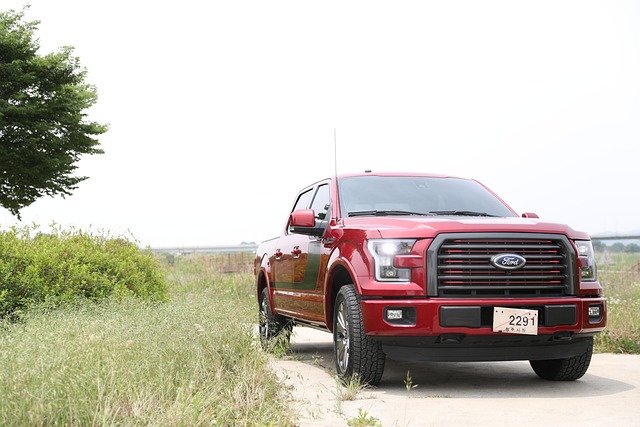Looking to register your car in California? This comprehensive guide breaks down the process step by step, from understanding crucial requirements to securing your unique Vehicle Identification Number (VIN) using a verified tool. Learn how to gather essential documents, complete the online or in-person registration process, and pay fees promptly. Discover the importance of a VIN verifier for vehicle authenticity during this critical procedure.
- Understand California Car Registration Requirements
- Gather Necessary Documents for Car Registration
- Use VIN Verifier to Ensure Vehicle Authenticity
- Complete Online or In-Person Car Registration Process
- Pay California Car Registration Fees and Obtain Plate
Understand California Car Registration Requirements

Before registering your car in California, it’s crucial to understand the state’s specific requirements. One key aspect is ensuring your vehicle has a valid VIN (Vehicle Identification Number) inspection. This process verifies the authenticity of your car’s details, including its make, model, and year, using advanced technology like a vin verifier.
California mandates this vin inspection to prevent theft and ensure road safety. You can conduct this check through various methods, including a traditional mobile vin verification service or by visiting an approved inspection station. This step is fundamental to ensuring your car’s registration process goes smoothly and complies with state regulations.
Gather Necessary Documents for Car Registration

Before you begin the car registration process in California, it’s crucial to gather all the necessary documents. This includes your vehicle’s Registration Application (Form DS-42), which can be obtained from the California Department of Motor Vehicles (DMV). Additionally, you’ll need proof of insurance, a valid driver’s license, and the Vehicle Identification Number (VIN) verifier certificate if you’ve recently purchased the car. A mobile VIN inspection or verification service can help ensure your vehicle’s history is accurate and free from any discrepancies.
Some documents may vary based on how you acquired the vehicle. For instance, if you’re registering a new car, you might need a manufacturer’s certificate of origin (MCO) and dealer documentation. If transferring ownership from another state, you’ll require a valid out-of-state title and registration. Always refer to the DMV’s guidelines for the most accurate and up-to-date requirements.
Use VIN Verifier to Ensure Vehicle Authenticity

Before registering your car in California, it’s crucial to verify its authenticity using a trusted tool like a VIN (Vehicle Identification Number) verifier. This step ensures that the vehicle is genuine and hasn’t been reported stolen or had its identity altered. There are various online services available, but for added convenience, consider using a mobile VIN verifier app. These apps provide quick and easy access to detailed vehicle history reports, allowing you to cross-check crucial information with just a few taps on your smartphone.
A mobile VIN inspection can reveal vital details such as the car’s original manufacturing date, previous owners, major accidents, and service records. This is particularly important in California, where vehicles undergo rigorous emission tests. By ensuring the vehicle’s authenticity upfront using a reliable mobile vin verification tool, you streamline the registration process and minimize potential delays or issues during the official inspection.
Complete Online or In-Person Car Registration Process

In California, car registration can be completed either online or in-person at a DMV office. The process involves several key steps to ensure all vehicle documentation is accurate and up-to-date. First, gather essential documents including your vehicle’s Registration Application (Form DVF 14), proof of insurance, proof of identity, and the Vehicle Identification Number (VIN) verifier or a valid driver’s license with a photo. For added convenience, many residents opt for a mobile VIN inspection or use an online VIN verifier to initiate the process from the comfort of their homes.
Once all required documents are ready, either submit your application at a local DMV or register online through the California Department of Motor Vehicles’ secure website. During registration, you’ll need to provide detailed information about your vehicle, including its make, model, year, and color. After successful submission, you will be issued a new registration certificate and license plate, completing the car registration process in California efficiently and effectively.
Pay California Car Registration Fees and Obtain Plate

After completing your vehicle’s registration application, it’s time to pay the California car registration fees. These fees vary based on your vehicle type and model year, so make sure to check the official California DMV website or consult a representative for accurate pricing information. You can typically pay online, by mail, or in person at a local DMV office. Once your payment is processed, you’ll receive confirmation and be one step closer to officially registering your car.
As part of the process, you’ll need to obtain license plates for your vehicle. In California, these plates are assigned based on your registration status and vehicle information. After submitting your application and fees, a local DMV office will issue your license plates. For convenience, many residents opt for the mobile vin verification or mobile vin inspection service, allowing them to complete the plate issuance process from the comfort of their homes or offices.
Registering a car in California involves understanding specific requirements, gathering essential documents, and completing a straightforward process. Using a VIN verifier is crucial to ensure vehicle authenticity. Once approved, you can pay the necessary fees and obtain your new registration plate, legally operating your vehicle on California roads.
